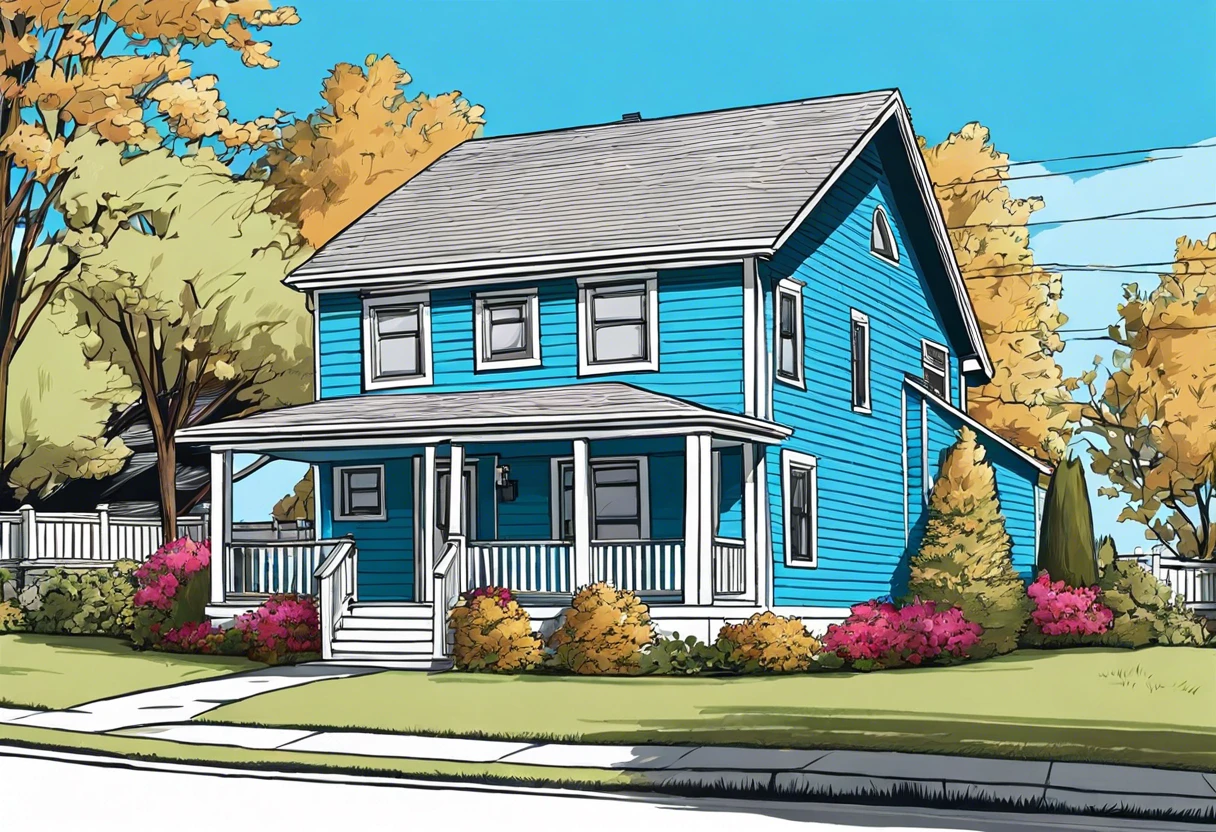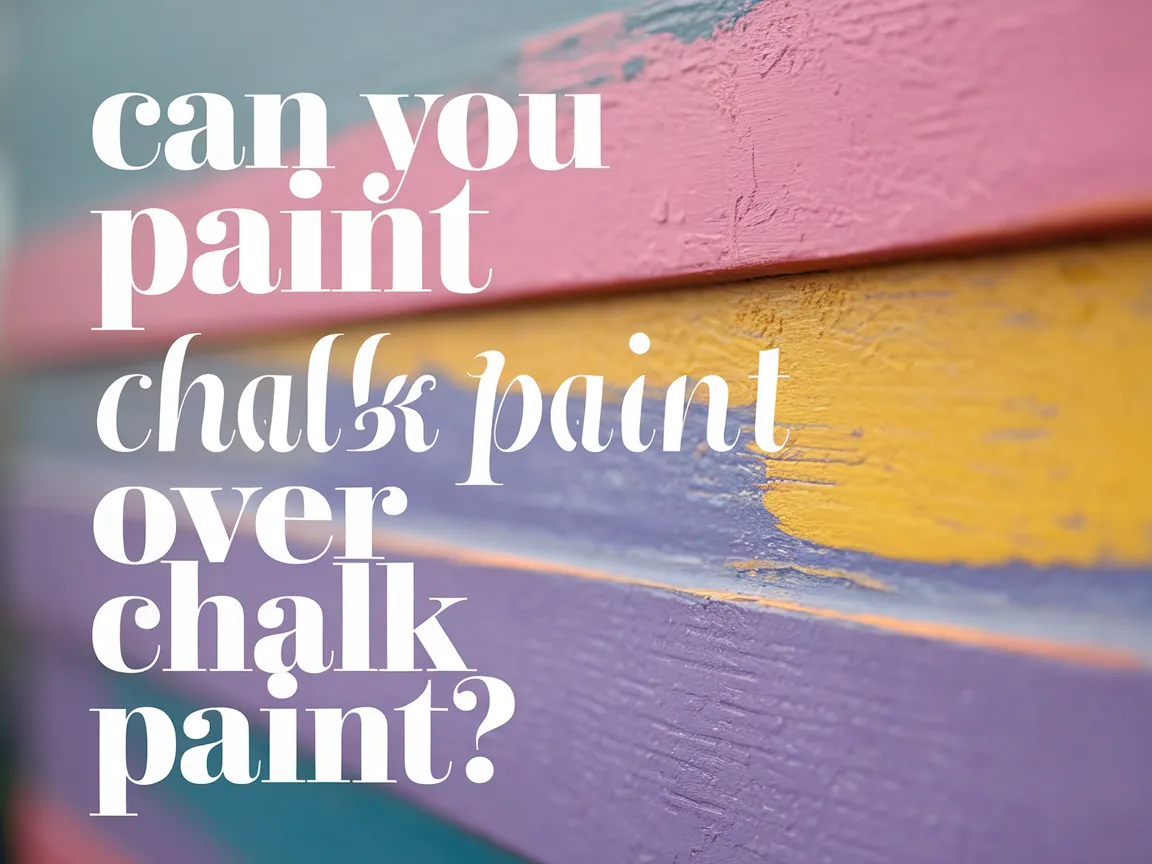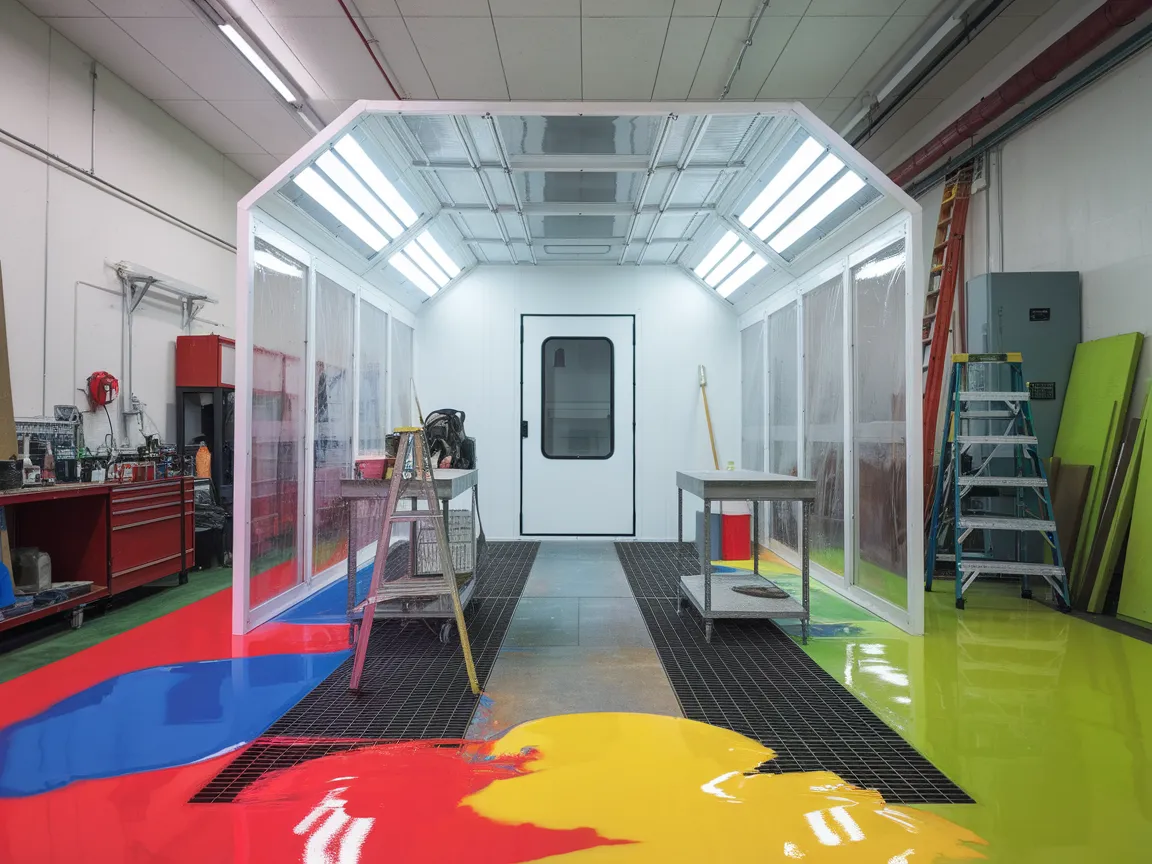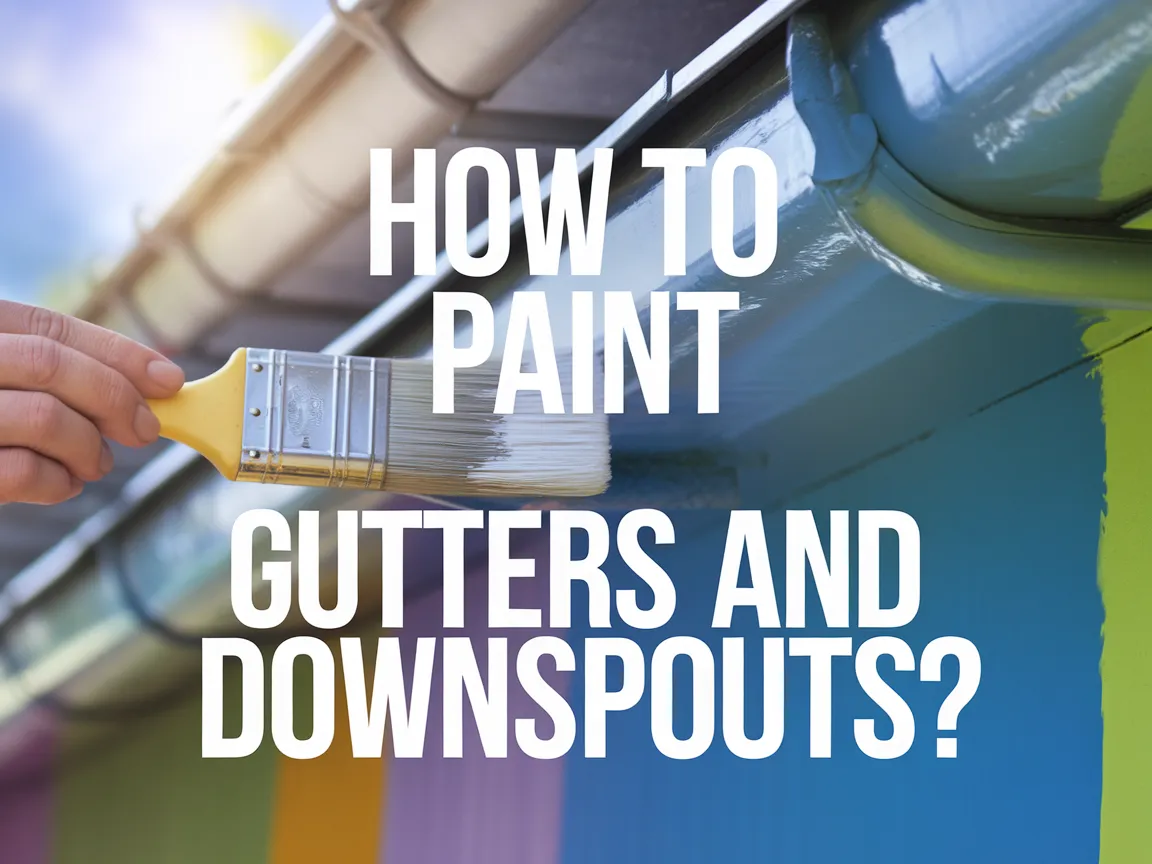Can You Paint Vinyl Siding on a Home?
Vinyl siding is like a colorful skin for your house. It keeps your home safe and warm, while making it look pretty too!
So, can you paint vinyl siding on a home? It’s super important to know the right way to do it, or you could end up with a messy house. Trust me; I’ve learned that the hard way!
In this article, you’ll discover what vinyl siding is, what to think about before painting, steps for painting, suitable paint types, color ideas, common problems, and DIY maintenance tips. You’ll also find answers to questions like can you paint vinyl windows exterior and more.
Contents
- 1 Can You Paint Vinyl Siding on a Home?
- 2 What is Vinyl Siding?
- 3 What to Consider Before You Start Painting Vinyl Siding
- 4 Pros and Cons of Painting Vinyl Siding
- 5 Optimal Surface Preparation Techniques
- 6 Steps to Successfully Paint Vinyl Siding
- 7 Recommended Color Palette for Painting Vinyl Siding
- 8 Types Of Paint Suitable for Vinyl Siding
- 9 Factors Affecting the Success Of Painting Vinyl Siding
- 10 Common Issues When Painting Vinyl Siding
- 11 Finishing Touches to Enhance Your Painted Vinyl Siding
- 12 DIY Project Ideas for Vinyl Siding Maintenance and Upkeep
- 13 What Are the Best Practices for Maintaining Painted Vinyl Siding?
- 14 How Long Will My Paint Last on Vinyl Siding?
- 15 Choosing the Right Time for Painting Vinyl Siding
- 16 Frequently Asked Questions About Painting Vinyl Siding
- 17 Conclusion
- 18 Additional Resources
Can You Paint Vinyl Siding on a Home?
Yes, you can paint vinyl siding on a home! Use a high-quality exterior paint made for plastic surfaces. Make sure to clean the siding first and choose light colors for best results. Remember, darker colors may warp the material. If you’re experiencing unexpected paint issues during the process, paint bubbling can signal underlying problems.
The Finishing Touch
A freshly painted wall is a blank canvas. The best way to bring your room to life is with a single piece of statement art that ties everything together.
Browse Wall Art at Big Wall DecorWhat is Vinyl Siding?
Vinyl siding is a popular exterior cladding made from polyvinyl chloride (PVC) resin. It’s durable, lightweight, and typically lasts 20 to 40 years, depending on climate and maintenance.
Now, about painting vinyl siding on your home—I’ve considered it during renovations. To refresh my home’s look, I wondered if I could paint vinyl siding, but I learned it takes more than just applying color. When tackling exterior painting projects, you might also encounter challenges with other surfaces like painting cement surfaces effectively.
Using vinyl siding for my house makeover was extremely helpful. Learning how to maintain the color scheme while painting vinyl gave me insight into the durability of my materials. Considering how to paint vinyl window shutters also helped me realize how certain shades enhance the elements around windows and siding, improving the overall vibe. If you’re wondering about paint compatibility, you might want to explore painting techniques for different surfaces.
What to Consider Before You Start Painting Vinyl Siding
What do you need to get started?
- Quality Exterior Paint: You need high-quality exterior paint, like Sherwin-Williams Duration, which withstands UV rays and harsh weather for durability.
- Power Washer: A power washer, such as the Sun Joe SPX3000, makes cleaning easier by removing dirt and grime that can affect paint adhesion.
- Paint Sprayer: A paint sprayer, like the Graco TrueCoat 360, ensures even coverage, saves time, and helps prevent drips.
- Masking Tape: Use quality masking tape, such as FrogTape, to protect edges and keep your work neat.
- Safety Gear: Safety gear, including goggles and respirators, protects you from fumes and splashes.
You should now have a good understanding of the factors to think about before painting vinyl siding. In the next part, we’ll discuss the advantages and disadvantages of this process.
Also See: Can You Paint Composite Deck Boards? Quick Tips!

The Finishing Touch
A freshly painted wall is a blank canvas. The best way to bring your room to life is with a single piece of statement art that ties everything together.
Browse Wall Art at Big Wall DecorPros and Cons of Painting Vinyl Siding
Before diving in, let’s weigh the pros and cons of painting vinyl siding on your home.
| Pros | Cons |
|---|---|
|
|
We’ve wrapped up the advantages and disadvantages of painting vinyl siding here. Let us turn our attention to optimal surface preparation techniques.
Optimal Surface Preparation Techniques
Surface prep is crucial for successful paint adhesion on vinyl siding. Here’s how to ensure you’re ready:
- Cleaning: Use a mixture of water and detergent, and rinse thoroughly to avoid soap residue.
- Repairing: Fix any cracks or damage with vinyl-safe caulk. This prevents moisture entry.
- Dry Time: Allow the siding to dry completely after cleaning. A damp surface can ruin your paint job!
You should now have a good understanding of effective surface preparation methods. In the next part, we’ll discuss painting vinyl siding.
Steps to Successfully Paint Vinyl Siding
Now, we’ll cover the steps to effectively paint vinyl siding on your home. Pay attention to the details for the best results.
-
Choose the Right Paint for Vinyl Siding
Select paint specifically labeled for vinyl. Latex, water-based paint is common; choose a satin or semi-gloss finish for durability and best results.
Ensure the color is light or medium; darker shades can warp vinyl due to heat absorption. Some experts recommend using contrasting colors to ease maintenance in case of wear.
-
Clean the Vinyl Siding Thoroughly
Scrub the vinyl siding with a mixture of water and mild detergent to remove dirt, grime, and mold. A pressure washer can help, but set it to lower pressure (About 1300–1600 Psi) to avoid damage. When cleaning, be mindful of proper disposal methods for used cleaning materials and paint can recycling guidelines.
Rinse all soap off with water after scrubbing. This ensures proper paint adhesion; if dirt remains, your paint won’t stick well.
-
Apply a Primer if Necessary
If you’re changing the color drastically or painting unpainted siding, use a vinyl-safe primer. Trust me, priming can save you from needing extra coats of paint later.
Apply an even coat of primer and let it dry fully before moving on. This is especially important in high-humidity areas, as moisture can affect paint adhesion.
-
Paint the Vinyl Siding
Start with a roller or a quality spray gun for an even application. Apply paint in long strokes and cover every groove in the siding to ensure precision and longevity.
If you’re using two coats, wait about 2–4 hours before applying the second, but always check the instructions for cure time. Each layer adds protection, so don’t skip this if you want your painted siding to last. When working with specific wood types like cedar, you might need specialized painting techniques to ensure proper wood surface preparation.
-
Allow Adequate Drying Time
After the final coat, let it dry based on the manufacturer’s recommendations. It usually takes about 24–48 hours to fully cure, depending on humidity and temperature.
Avoid exposure to strong sunlight or rain during this period to prevent damage or peeling. Patience is key—I promise it’s worth the wait!
You should now have a good understanding of the steps to successfully paint vinyl siding. In the next part, we’ll discuss recommended color options for vinyl siding.

Recommended Color Palette for Painting Vinyl Siding
I suggest a Coastal Retreat palette for your vinyl siding. It’s a soothing mix of soft blues and warm neutrals that create a serene vibe.
| Color Box | Hex Code | Color Name |
|---|---|---|
| #A6C8E0 | Sky Blue | |
| #F2E1D1 | Soft Sand | |
| #B09C8A | Driftwood Brown | |
| #194B6D | Deep Ocean |
Types Of Paint Suitable for Vinyl Siding
Let’s explore the types of paint you can use for vinyl siding: Acrylic, Vinyl-safe colors, Oil-based, and Elastomeric paints.
-
Acrylic Paint
Acrylic paints are water-based and flexible. They provide a durable finish that withstands temperatures from -20°F (-29°C) to 150°F (65°C), making them ideal for outdoor climates.
-
Vinyl-safe Colors
These paints are formulated to prevent warping or fading of vinyl. They ensure your vinyl won’t heat beyond 140°F (60°C), giving your home lasting color.
-
Oil-based Paint
Oil-based paints bond well but require longer drying times and careful preparation. They handle the elements but create a rigid finish that risks cracking in temperatures over 80°F (27°C).
-
Elastomeric Paint
This type offers excellent elasticity and waterproofing. It can expand and contract with the siding, making it ideal for areas with fluctuating temperatures and humidity above 40%.
After many attempts, I’ve found that acrylic paint works best for me. It combines durability with quick drying, making projects efficient.
Factors Affecting the Success Of Painting Vinyl Siding
What factors affect your ability to give vinyl siding a fresh look?
-
Condition of the Siding: Damaged or weathered siding can lead to poor paint adhesion.
-
Type of Paint Used: Using vinyl-safe paint ensures durability and flexibility, preventing cracks.
-
Temperature: Painting in extreme temperatures (Below 10°C or Above 29°C; 50°F to 85°F) can cause issues.
-
Surface Preparation: A clean surface is essential; dirt or grease can ruin the paint finish.
Common Issues When Painting Vinyl Siding
When my friend painted the vinyl siding on her house, she didn’t clean it first. Dust and grime caused the paint to peel off quickly!
The Finishing Touch
A freshly painted wall is a blank canvas. The best way to bring your room to life is with a single piece of statement art that ties everything together.
Browse Wall Art at Big Wall DecorTo avoid this, power wash (Around 1,500 Psi) the surface. Use a vinyl-safe primer for better adhesion. It’s essential.
Finishing Touches to Enhance Your Painted Vinyl Siding
After you’ve painted vinyl siding, seal it with a UV-resistant protective coat. Use products like Behr Premium and apply within 24 hours for optimal adhesion.
Inspect seams every 6 months for any bubbling or peeling edges. Carefully check corners with a fine brush to avoid paint build-up, which can cause further deterioration.
If this isn’t your first time, apply a second coat of paint designed for vinyl after three years for the best results. Stick with color shifts that enhance the existing hue to prevent mismatches. When exploring painting techniques for different surfaces, you might want to explore acrylic paint application methods.
DIY Project Ideas for Vinyl Siding Maintenance and Upkeep
How about trying a funky mural or a striking geometric design on your vinyl siding? It’ll not only spruce things up but turn your home into a masterpiece!
To tackle this, grab some outdoor vinyl spray paint—about $20 (USD) per can, and you’ll likely need 2-3 cans, depending on the design. Set aside a couple of weekends, around 4-6 hours total, and you’ll be set to paint your unique canvas. Professional artists often use specialized painting techniques that can transform ordinary surfaces, such as tree trunk painting methods.
Now, if you’re wondering, “Can you paint vinyl siding on a home?”—absolutely! You can also purchase vinyl siding colors and simply install them over the old stuff, mixing new hues and textures for an eye-catching twist. If you’re looking to transform other surfaces like basement walls, you might want to explore painting cement walls effectively.
Oh, and don’t forget a lively flower box to compliment your new look! It’s a simple touch, yet it breathes life into the space, both creatively and naturally.
What Are the Best Practices for Maintaining Painted Vinyl Siding?
Once you’ve painted your vinyl siding, keep it looking fresh with regular maintenance. Here’s how to do it right.
-
Routine Cleaning
Every 6 to 12 months, give your siding a good wash. Use a mixture of water and mild soap. A soft-bristle brush works wonders for getting in the grooves!
-
Inspect for Damage
Check your siding every season. Look for peeling, chips, or mold. Early detection can prevent bigger problems down the road!
-
Repaint as Needed
After about 5 to 10 years, or when colors start fading, it’s time to repaint. Choose a color that complements your home’s style.
How Long Will My Paint Last on Vinyl Siding?
The longevity of paint on vinyl siding depends on various factors. Check this summary!
| Paint Type | Expected Lifespan (Years) | Factors Affecting Longevity |
|---|---|---|
| Acrylic Latex | 5-10 | UV Exposure, Surface Prep Quality |
| Vinyl-safe Paint | 7-12 | Weather Conditions, Color Choice |
| Oil-based Paint | 4-8 | Moisture Levels, Temperature Fluctuations |
| Elastomeric Paint | 10-15 | Environmental Factors, Maintenance |
Also See: Can You Paint a Baseboard Heater? Here’s What to Know
Choosing the Right Time for Painting Vinyl Siding
Timing your project can make a big difference. Here are tips for the best conditions.
-
Seasonal Guidelines
The best seasons are late spring or early fall. Temperatures should ideally be between 50°F (10°C) and 85°F (29°C) for optimal curing.
-
Humidity Levels
Avoid high humidity days, as it can affect the drying process. Aim for humidity below 70% for the best results.
Frequently Asked Questions About Painting Vinyl Siding
Can You Change the Color Of Vinyl Siding?
Yes, you can change the color of vinyl siding. Painting allows for a fresh look and offers endless color options to match your style.
What Type Of Paint Works Best on Vinyl Siding?
Acrylic latex paint works best on vinyl siding. It adheres well and is designed to withstand temperature changes, ensuring long-lasting results.
Is It Necessary to Prime Vinyl Siding Before Painting?
No, it’s not necessary to prime vinyl siding before painting. Modern paints often adhere well directly to the surface, saving you time and effort.
How Long Does Painted Vinyl Siding Last?
Painted vinyl siding can last between 5 to 10 years. Proper surface preparation and using quality paint can extend this life considerably.
Can Painting Vinyl Siding Void My Warranty?
Yes, painting vinyl siding can void your warranty. Always check with your manufacturer before painting to avoid potential issues.
Can You Paint Vinyl Windows Exterior?
Yes, you can paint vinyl windows exterior. Use a suitable vinyl-safe paint to enhance the appearance without damaging the surface.
Can You Paint White Vinyl Windows Black?
Yes, you can paint white vinyl windows black. Just ensure you use high-quality vinyl-safe paint to avoid heat-related warping.
How to Paint Vinyl Window Shutters?
To paint vinyl window shutters, clean well and apply a primer. Use a vinyl-safe paint for durability, ensuring a professional finish.
Conclusion
We covered what vinyl siding is, what to consider before painting, steps for success, color choices, suitable paint types, factors impacting outcome, common issues, finishing touches, and DIY maintenance tips.
So, can you paint vinyl siding on a home? Yes, you can if you use the right type of paint and follow the best practices discussed, like prep work and color selection. If you have more questions about your vinyl siding project, do not hesitate to ask.
We invite you to explore more resources and insights at Paint Answers, where you’ll find valuable information to support your project.
Additional Resources
- Smith, R. (2003). The Artist’s Handbook of Materials and Techniques (5th ed.). New York, NY: Knopf.
- Can You Paint Vinyl Siding? 6 Best Vinyl Painting Colors of 2023
- How to Paint Vinyl Siding in 7 Steps🏠🖌️🎨
- Can You Paint Vinyl Siding? 5 Factors to Consider
Isabella is a Filipino-American art writer and critic specializing in contemporary painting, blending her Filipino heritage with global art trends. She holds a BFA from California State University, Long Beach, and a Minor in Art History from the University of the Philippines. Isa has experience as a Gallery Assistant, Art Appraisal Specialist, and Social Media Creative for Art & Design.
Exterior, Siding









